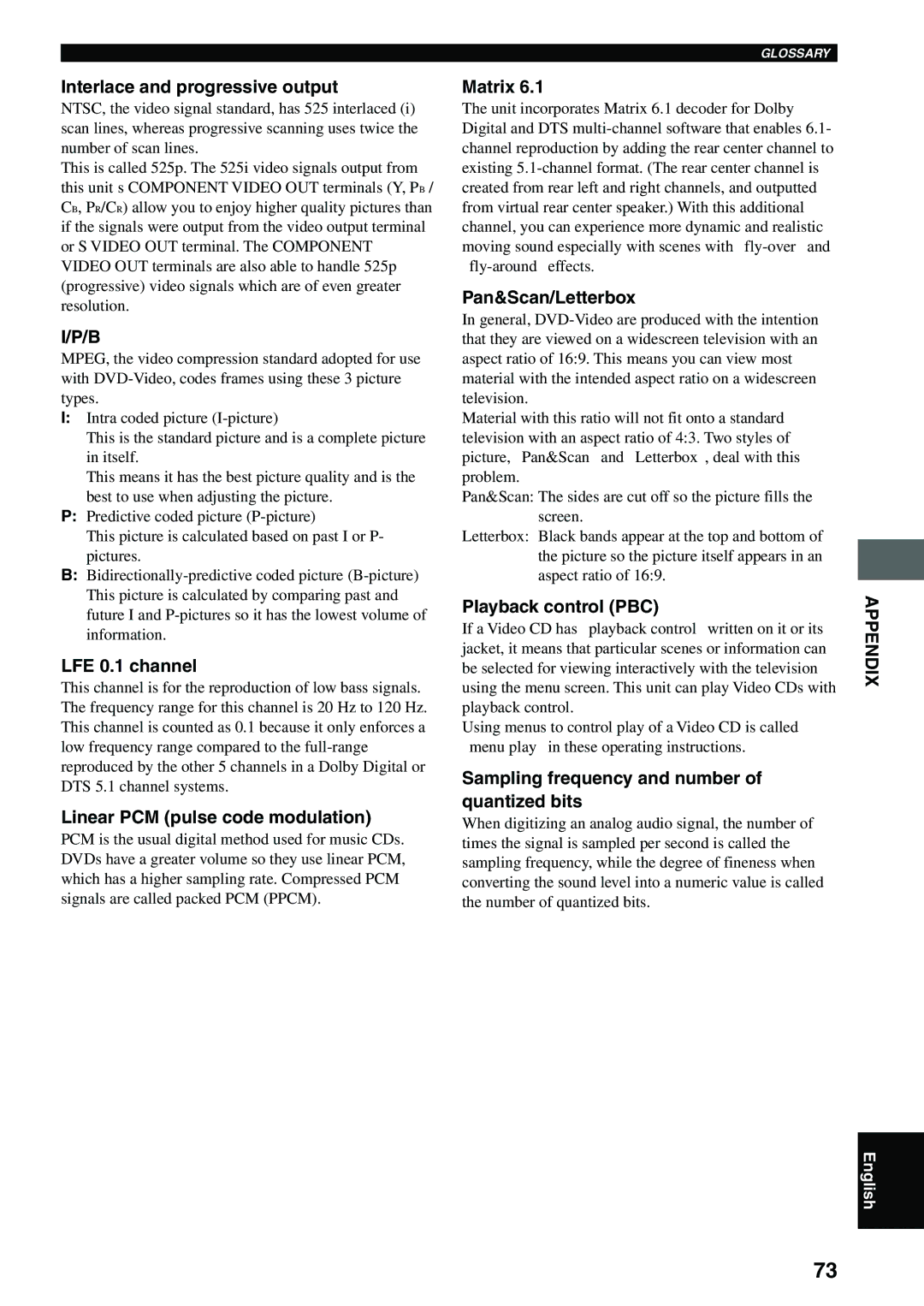
Interlace and progressive output
NTSC, the video signal standard, has 525 interlaced (i) scan lines, whereas progressive scanning uses twice the number of scan lines.
This is called 525p. The 525i video signals output from this unit’s COMPONENT VIDEO OUT terminals (Y, PB / CB, PR/CR) allow you to enjoy higher quality pictures than if the signals were output from the video output terminal or S VIDEO OUT terminal. The COMPONENT VIDEO OUT terminals are also able to handle 525p (progressive) video signals which are of even greater resolution.
I/P/B
MPEG, the video compression standard adopted for use with
I:Intra coded picture
This is the standard picture and is a complete picture in itself.
This means it has the best picture quality and is the
best to use when adjusting the picture.
P:Predictive coded picture
This picture is calculated based on past I or P-
pictures.
B:
LFE 0.1 channel
This channel is for the reproduction of low bass signals. The frequency range for this channel is 20 Hz to 120 Hz. This channel is counted as 0.1 because it only enforces a low frequency range compared to the
Linear PCM (pulse code modulation)
PCM is the usual digital method used for music CDs. DVDs have a greater volume so they use linear PCM, which has a higher sampling rate. Compressed PCM signals are called packed PCM (PPCM).
GLOSSARY
Matrix 6.1
The unit incorporates Matrix 6.1 decoder for Dolby Digital and DTS
Pan&Scan/Letterbox
In general,
Material with this ratio will not fit onto a standard television with an aspect ratio of 4:3. Two styles of picture, “Pan&Scan” and “Letterbox”, deal with this problem.
Pan&Scan: The sides are cut off so the picture fills the screen.
Letterbox: Black bands appear at the top and bottom of the picture so the picture itself appears in an aspect ratio of 16:9.
Playback control (PBC) | APPENDIX |
| |
If a Video CD has “playback control” written on it or its |
|
jacket, it means that particular scenes or information can |
|
be selected for viewing interactively with the television |
|
using the menu screen. This unit can play Video CDs with |
|
playback control. |
|
Using menus to control play of a Video CD is called |
|
“menu play” in these operating instructions. |
|
Sampling frequency and number of |
|
quantized bits |
|
When digitizing an analog audio signal, the number of |
|
times the signal is sampled per second is called the |
|
sampling frequency, while the degree of fineness when |
|
converting the sound level into a numeric value is called |
|
the number of quantized bits. |
|
English
73
